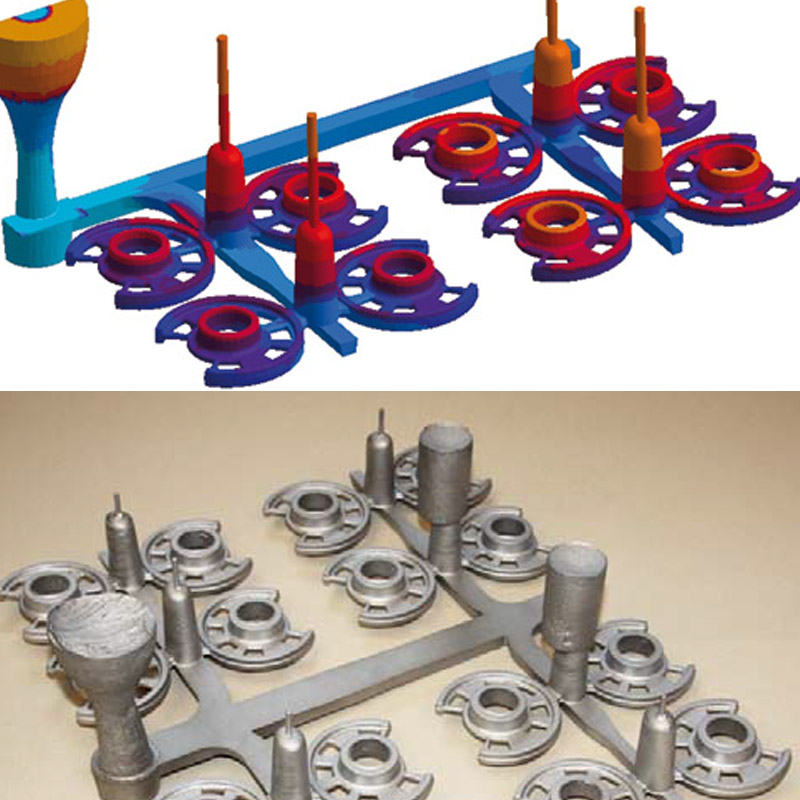Systematic Optimization of Aluminum Sand Casting Gating Systems
Steve Sikorski, Georg Wilhelm Dieckhues, Jörg Christian Sturm
1. Introduction
Foundries are continuously exposed to ever increasing demands regarding their competitiveness, as well as in developing their specific casting process. This is especially the case for equipment intensive jobbing foundries, which have to develop numerous new parts per year under perpetually increasing economic pressures.
The development process for a new part was in the past determined within the foundry using "experience" as well as "trial and error". Nowadays, however, advanced casting process simulation tools have established itself as very reliable tools in the development process of new parts. Extensive casting trials are avoided, despite ongoing changes to pattern and process layouts, which especially jobbing foundries are forced into due to time and cost constraints. Only at the very end of the development process, once all parameters and design ideas are finalized, a test casting is produced.
That way the equipment utilization of jobbing foundries can be extensively improved, especially when continuous varieties in parts to manufacture and small batch-sizes prevail.
Casting process simulation provides "exact" parameters for the casting process to the foundry.
Even with established casting processes, there is still a high amount of variability inherited in them, as process fluctuations are unavoidable. A process window needs to be evaluated and established. The larger and the more robust this process window is, the better the economics and quality of demanding castings can be realized. Hence, the process knowledge of foundry personnel is essential for the practical utilization of casting process simulation results.
[...]
Please read the complete publication in the linked PDF.
